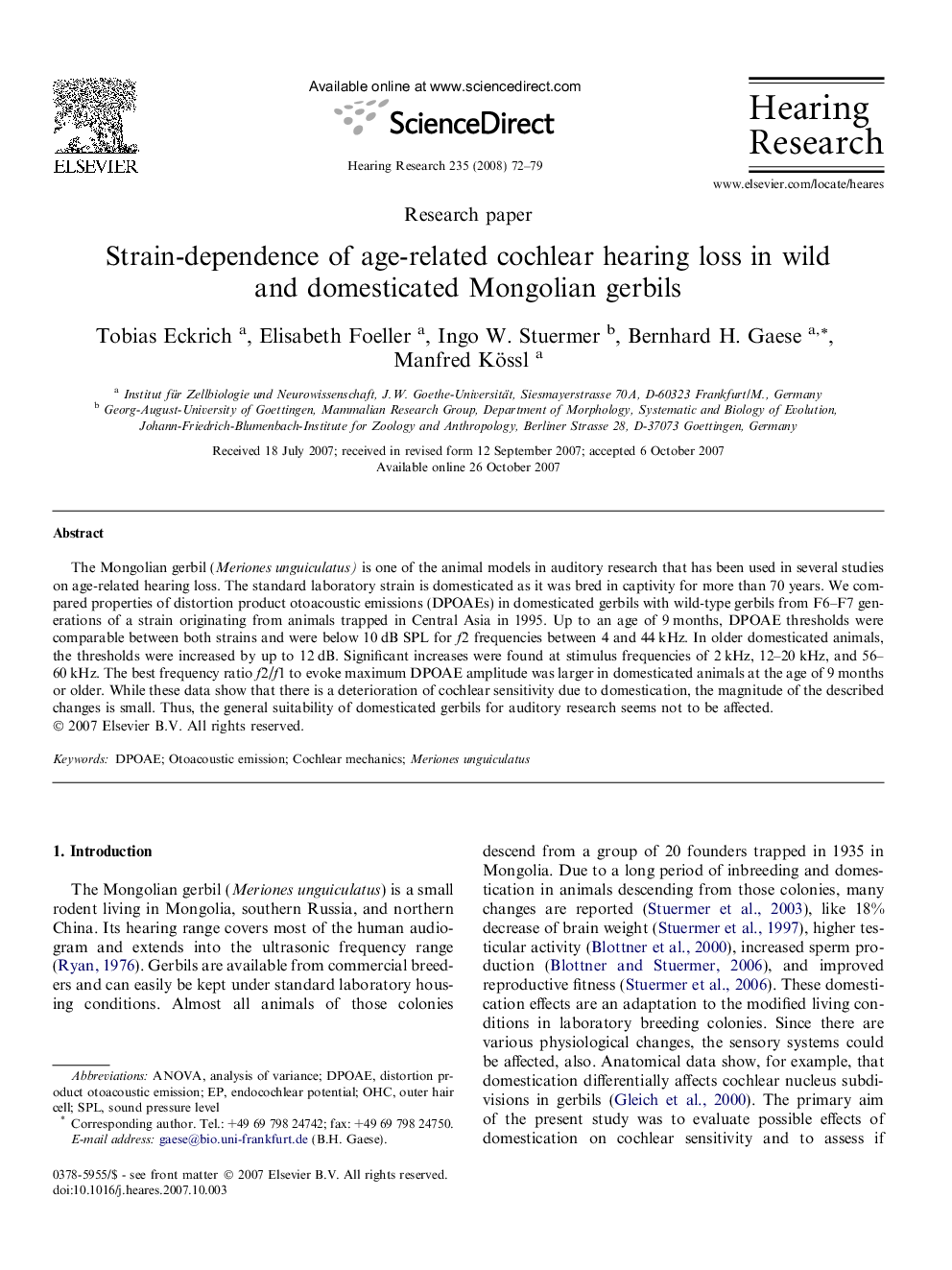| Article ID | Journal | Published Year | Pages | File Type |
|---|---|---|---|---|
| 4356143 | Hearing Research | 2008 | 8 Pages |
The Mongolian gerbil (Meriones unguiculatus) is one of the animal models in auditory research that has been used in several studies on age-related hearing loss. The standard laboratory strain is domesticated as it was bred in captivity for more than 70 years. We compared properties of distortion product otoacoustic emissions (DPOAEs) in domesticated gerbils with wild-type gerbils from F6–F7 generations of a strain originating from animals trapped in Central Asia in 1995. Up to an age of 9 months, DPOAE thresholds were comparable between both strains and were below 10 dB SPL for f2 frequencies between 4 and 44 kHz. In older domesticated animals, the thresholds were increased by up to 12 dB. Significant increases were found at stimulus frequencies of 2 kHz, 12–20 kHz, and 56–60 kHz. The best frequency ratio f2/f1 to evoke maximum DPOAE amplitude was larger in domesticated animals at the age of 9 months or older. While these data show that there is a deterioration of cochlear sensitivity due to domestication, the magnitude of the described changes is small. Thus, the general suitability of domesticated gerbils for auditory research seems not to be affected.
